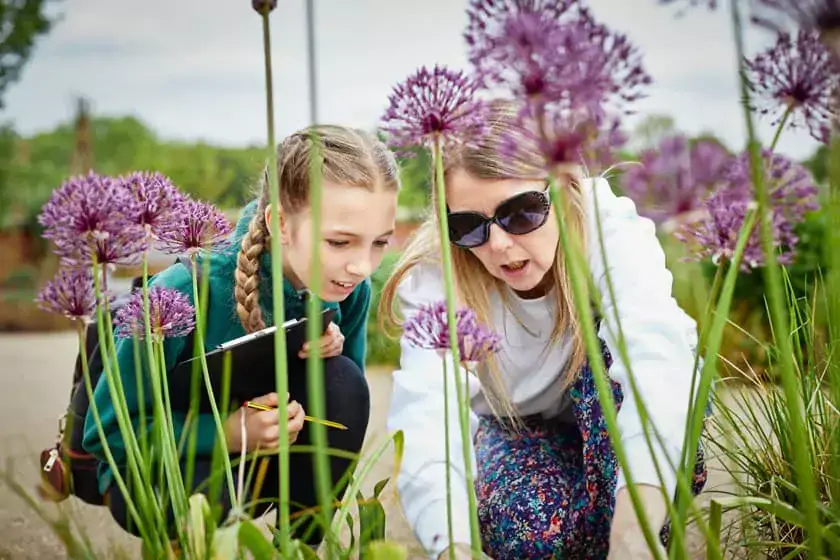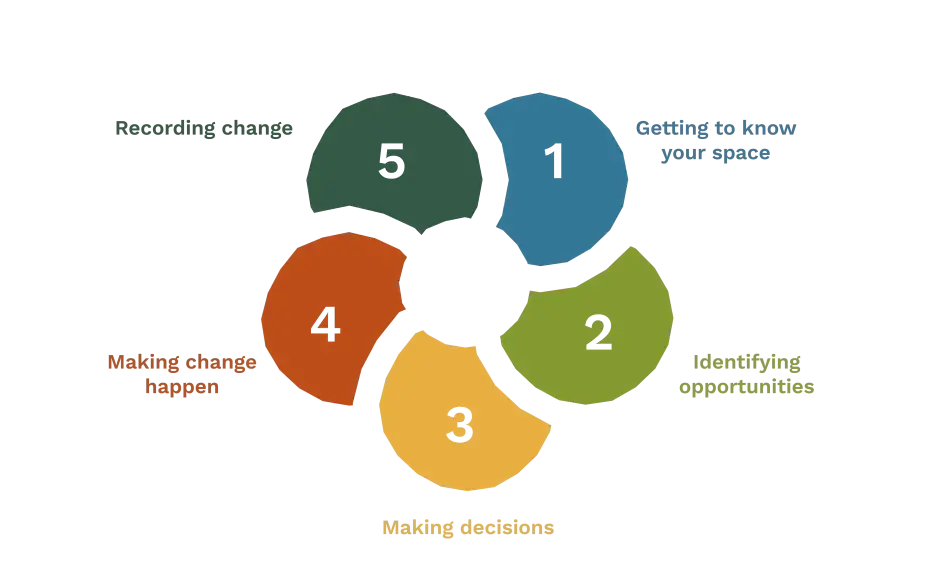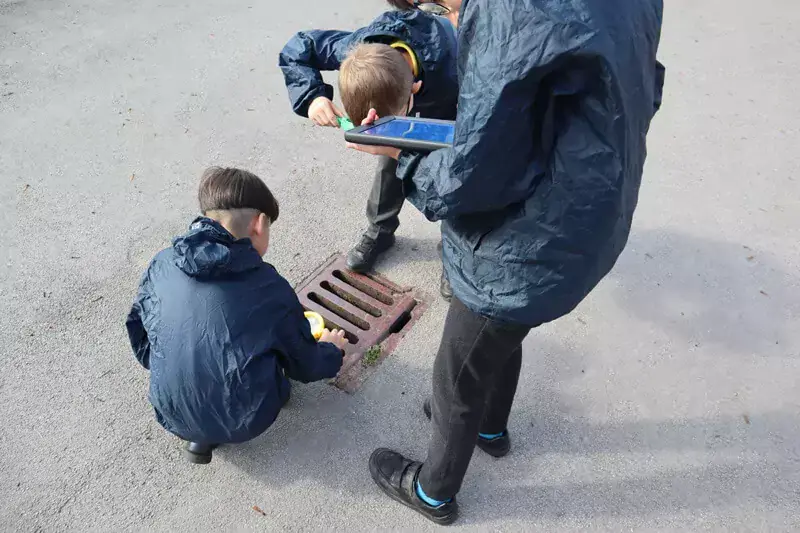How the Nature Park works
By taking part in the Nature Park, young people will lead the way following a five-step cycle which can be built upon year on year


The National Education Nature Park programme aims to embed nature-based learning in the curriculum, and encourage children and young people all over the country to take action to improve their site for people and wildlife.
The programme provides the support and guidance needed to make this happen, with five key steps in the journey and the actions needed to reach your goals.
Take a look at our video which explains the five-step Nature Park process in more detail

1. Getting to know your space
- children and young people will observe and learn about their local environment to understand what's there, what's not there and how people and wildlife experience it
- children and young people will take notice of nature and features on their site, and consider their own thoughts and reflections
- by the end of this step, children and young people will have explored and familiarised themselves with their space and begun to form a closer connection to nature
- they'll also have played an active role in scientific practices, fieldwork and using GIS technology, building green skills in identification and ecology and recording data
- together, you’ll have mapped the habitats on your site
- try out the below activities to get started
Hidden Nature Challenge Sound mapping Creative responses to a place
2. Identifying opportunities
- using information from data collected so far, children and young people will consider the experiences of others, including wildlife, to think about what could be changed or improved on their site
- by the end of this step, children and young people will have an understanding of the strengths and opportunities of their outdoor environment, and what they’d like it to look like for future generations
- Children and young people will build green skills in interpreting data and creative thinking and decision making
- try out the activities below
Points of view 3D model making Biodiversity bar charts
3. Making decisions
- children and young people will feel empowered to work together to plan what improvements for nature they want to make on their site and solve problems
- by the end of this step, children and young people will have a clear plan of what they want to do, why they want to do it and how they will work together to achieve it
- children and young people will understand the importance of teamwork and be able to plan for long-term change, developing green skills in creative thinking and decision making and communication
try out the activities below
4. Making change happen
- this step is all about children and young people putting the plan into action and spreading the word about what they are up to
- children and young people will start to make change happen on their learning site by turning grey spaces green
- by the end of this step, children and young people will have worked together to taken action for nature, developing green skills in environmental stewardship and horticulture through planting and growing, creating new habitats and running fundraising and awareness campaigns
- more resources for this step are coming soon
5. Recording change
- children and young people will record improvements in biodiversity, as well as sharing their story to inspire others and celebrate their achievements
- it's also an opportunity to reflect on what differences have been made and what has been learned along the way
- by the end of this step, children and young people will be able to reflect on what has changed and what they have accomplished, from personal achievements to boosts in biodiversity
- they'll build upon their experience in fieldwork and GIS technology to develop green skills in identification and ecology, recording data and communication
- more resources for this step are coming soon


